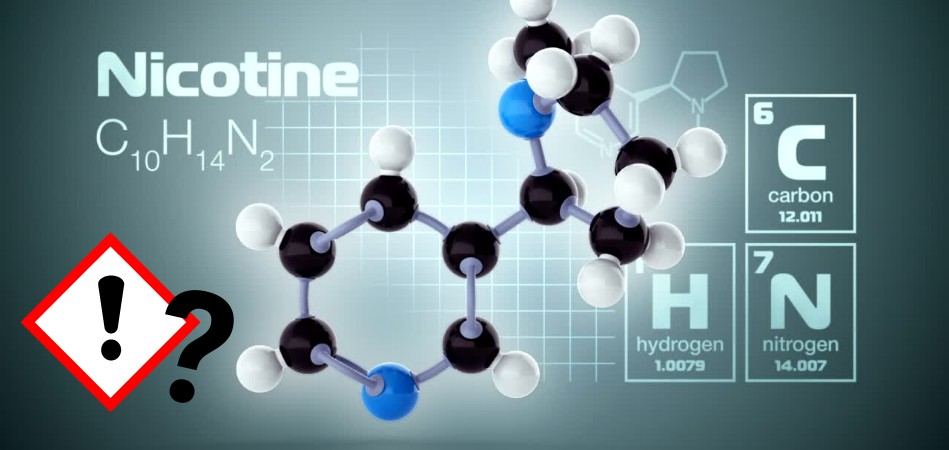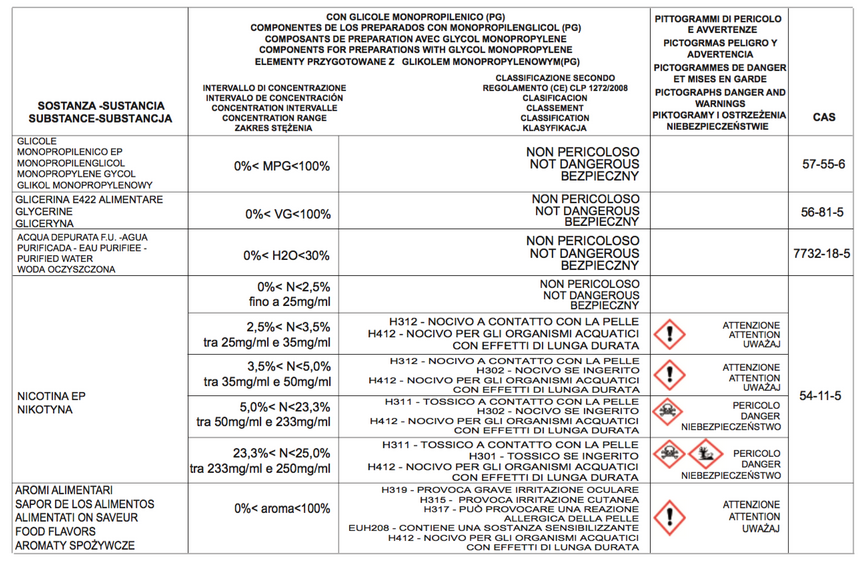
nicotine products: toxicity and labelling
To clarify some reports concerning the absence of the skull pictogram and the tactile triangle on nicotine-containing product packaging, I would like to clarify some technical issues that are useful to understand the reason for this.
To clarify some reports concerning the absence of the skull pictogram and the tactile triangle on nicotine-containing product packaging, I would like to clarify some technical issues that are useful to understand the reason for this.
LD (50) orally (rat) 70 mg/kg body weight
LD (50) by contact (rabbit) 50 mg/kg body weight
An important clarification is as follows: the nicotine concentration represents the amount of nicotine contained in a known volume of mixture. Based on this concept, to speak of LD (50) mplies that it is the total amount that is ingested or placed in contact with the skin which, depending on the body weight of the exposed person, places him or her in the position of 50% probability of having taken a lethal dose (this is why it is called LD (50) ).
So if the exposed subject weighs 60 kg the amount to be ingested for a potentially lethal toxicity at 50% probability is: 70 mg/kg x 60 kg = 4200 mg or 4.2 g of pure nicotine, not mixture. The titre of the mixture alone does not determine the amount of nicotine to which one is exposed, the assessment of both the dilution of the mixture and the exposure or ingestion to the total amount of diluted nicotine is crucial. Clearly, if the dilution is higher, the risk becomes lower as to take, say, the same amount of oral nicotine dosed at 500 mg/ml I would have to drink 100 times the amount dosed at 5 mg/ml.
Children need to be protected as they have trivially less body weight and therefore the containers must be placed in a safe place with a Child Proof cap according to the total amount of nicotine in the bottle.
A practical example: If we examine a bottle containing 5 ml of a mixture with a nicotine concentration of 20 mg/ml, we find that a total of 100 mg of nicotine is contained in the bottle. In this case, the 60 kg subject would have to ingest the contents of 42 bottles (i.e. 210 ml) to reach his LD(50) orally. This is of course the limit of acute toxicity, clearly lower ingestion levels still pose risks of intoxication in the subject according to the specific limits in the concentration/quantity ratio of the mixture ingested and which must be signalled with the appropriate pictograms defined according to the CLP regulation.
The indications we have assumed on the basis of these considerations are exemplified in the following table:

Below are the ECHA links for clarity.
Here are the GESTIS links for clarity. Substances database Nicotine
You can learn more by reading this study by the Swiss company TGE Consult

Comments
No comment at this time!
Leave your comment